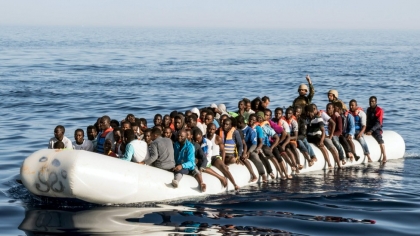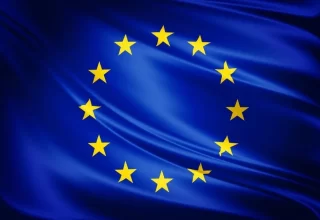
At the beginning of July, Lithuania declared state of emergency due to the large number of illegal migrants who crossed into the country from neighboring Belarus. Most of them were Iraqi citizens, but there were also people from Syria, Tajikistan and Russia (Centre for Eastern Studies 2021, “The Lithuanian-Belarusian migration crisis”). This is not the first time European countries witnessing substantial migration flow. Europe has already experienced the mass and unprecedented Migrant crisis that took place during 2014-2018 and the poor cooperation that the EU countries demonstrated by then. This time, another possible wave of the crisis is triggered due to the political tensions between Belarus and the EU. Most of the migrants who are residing in Belarus prefer to move to the EU countries to find opportunities as Belarus is facing economic sanctions from the EU, Canada, U.K. and U.S. over the continuing Lukashenko’s authoritative regime (Marples, 2009).
The relations between the EU and Belarus have worsened since 2020, when the EU has increasingly imposed restrictive measures against Belarus. The measures were adopted in response to the fraudulent nature of the August 2020 presidential elections in Belarus, and the intimidation and violent repression of peaceful protesters, opposition members and journalists (European Council “EU relations with Belarus”). However, that’s not the only reason. On 24 May, 2021 Lukashenko upset the EU again when he ordered forced landing of a Ryanair flight in Minsk, Belarus in order to detain journalist Raman Pratasevich (BBC 2021, “Belarus plane: What we know and what we don’t”). The European Council strongly condemned Belarus’s action and introduced a ban on the overflight of EU airspace and on access to EU airports by Belarusian carriers of all kinds (European Council “EU relations with Belarus”). In response to the sanctions, Russian backed Lukashenko declared he would no longer cooperate with the EU to stem illegal migration and as a matter of fact, Belarus opened its border following the statement from Lukashenko, the president of Belarus, “Before, we stopped drugs and migrants. Now you will eat this and catch them yourself” (Euronews 2021, “ A pathetic revenge policy’: Is Belarus facilitating illegal migration to Lithuania?”).
The border opening has definitely caused troubles to Baltic countries and mainly, the burden was hardly felt by Lithuania, a country that is located at northeastern Europe and is the largest of the three Baltic states (Estonia, Latvia, and Lithuania). Lithuania is bounded by Latvia to the north, Belarus to the east and south, Poland and the detached Russian oblast of Kaliningrad to the southwest, and the Baltic Sea to the west (Misiunas et al 2021). Since its independence in the early 1990s, Lithuania has increasingly become an emigration country for economic migrants and a destination country for irregular migrants from the east, mainly from neighboring countries of the Commonwealth of Independent States (CIS) (IOM, Lithuania). Lithuania’s first immigration law was introduced in 1991, in response to immigration from the Soviet Union (Brake, 2007). Following 1994, Lithuanian witnessed a growing number of migrants arriving without authorisation from Bangladesh, Pakistan and India (Lindberg and Borrelli, 2021). Today, the Lithuanian SBGS annually records between 3000 and 4000 irregular migrants who either entered, stayed, or sought to transit through the country without valid permits (ibid). Around 260 irregular migrants are detained in the country’s detention centre in Pabrade every year (Lindberg and Borrelli, 2021).
Considering the geopolitical aspect, Lithuania as a member of Schengen zone has taken over the position of facilitated transit of Russian citizens from the Russian mainland to Kaliningrad Oblast via Lithuania, emigration of Lithuanian nationals to Western Europe and trafficking in human beings (IOM, Lithuania). The Lithuanian border regime is nowadays shaped by common European regulations and policies, including the Schengen Code, the Dublin III Regulation, the Asylum Procedures Directive, the Reception Conditions Directive, and the EURODAC, SIS and VIS systems (Lindberg and Borrelli, 2021). Lithuania also receives substantial EU funding for external border patrolling, asylum, migration and integration management, return, and ‘internal security’ purposes (ibid). Despite this support, Lithuania declared that the government is unable to manage the flow of migrants and it is planned to build the physical barrier on Lithuania – Belarus border.
The political relations between the neighbouring countries – Lithuania and Belarus – are substantially tense. Lithuania openly criticizes and even opposes the president of Belarus for his anti-democratic regime, violation of human rights and imprisonment of opposition leaders. Lukashenko on the other hand, who has close ties with Russian president Vladimir Putin, treats migrants as a political weapon that enables him to take responsive measures against the opposing countries ( Reuters 2021, “Lithuania, EU say Belarus using refugees as ‘political weapon”).
Concentration of migrants on Lithuanian border puts at risk other Baltic states and the EU countries in general. Unfortunately, several parallels can be found with the current situation. Spain has experienced the same migrant flow from Morocco in May and applied the policy to “restore order” meaning to return migrants back to Morocco. Before that, in 2015 Greece has faced the same influx of migrants when one million people entered the European Union from the Middle Eastern countries such as Syria and Afghanistan and triggered the long-standing tensions between Turkey and Greece.
In both events described above, the problem solution was not based on a common ground, neither on a common interest, but the EU countries have chosen to develop individual approaches and policies that mostly focused on getting rid of as many migrants as possible.
Not surprisingly, Lithuania followed the same path. In mid-July, the parliament passed the legal amendments that included a fast-track procedure to deport migrants quickly, to cut the processing time of asylum applications from several months to just 10 days and to prevent the free movement of migrants (Euronews 2021, “Lithuania passes law to limit migrant arrivals from Belarus”). These measures certainly violate and restrict the migrants’ rights and human rights in general, while further deteriorates humanitarian conditions.
Once again, the developments underline that the EU lacks common approach to migration issues and the crises that took place during 2015-2018 has not neither been resolved nor could be prevented in future unless finding a long-term sustainable solution. This should be the priority for the EU considering that the victims are humans who suffer from multiple discrimination and violations of human rights.
References
BBC (2021), “Belarus plane: What we know and what we don’t”. Accessed 20 July 2021 <https://www.bbc.com/news/world-europe-57239521>
Brake, B. (2007). “Integration of Foreigners and Ethnic Minorities.” Bundeszentrale for Politische Bildung. 2007. <www.bpb.de//gesellschaft/migration/Dossier-migration/58435>.
Centre for Eastern Studies 2021, “The Lithuanian-Belarusian migration crisis”. Accessed 20 July 2021 <https://www.osw.waw.pl/en/publikacje/analyses/2021-06-16/lithuanian-belarusian-migration-crisis>
Euronews (2021) “A pathetic revenge policy’: Is Belarus facilitating illegal migration to Lithuania?:, accessed 20 July 2021 <https://www.euronews.com/2021/06/30/a-pathetic-revenge-policy-is-belarus-facilitating-illegal-migration-to-lithuania>
Euronews (2021) “Lithuania passes law to limit migrant arrivals from Belarus”. Accessed July 21 2021 <https://www.euronews.com/2021/07/13/lithuania-passes-law-to-limit-migrant-arrivals-from-belarus>.
European Council, “EU relations with Belarus“. Accessed 20 July 2021 <https://www.consilium.europa.eu/en/policies/eastern-partnership/belarus/>.
IOM, Lithuania, accessed 20 July 2021 <https://www.britannica.com/place/Lithuania. Accessed 21 July 2021>
Reuters (2021), “Lithuania, EU say Belarus using refugees as ‘political weapon”. Accessed 20 July 2021 <https://www.reuters.com/world/europe/belarus-using-refugees-weapon-must-face-more-eu-sanctions-lithuania-says-2021-07-12/>.
By Nino Zotikishvili: The European Institute for International Law and International Relations.














